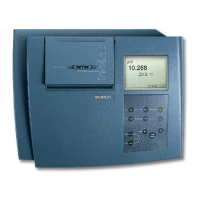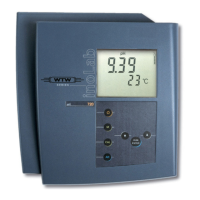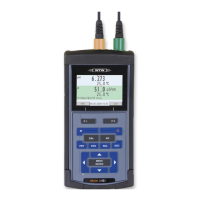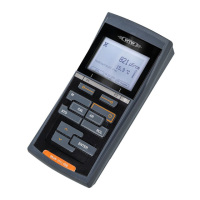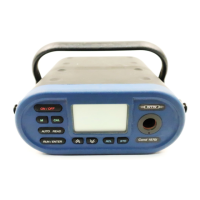Glossary inoLab
®
Multi 9620 IDS
138 ba77173e04 12/2017
18 Glossary
pH/ORP/ISE
Conductivity
Asymmetry see zero point
Junction The junction is a porous body in the housing wall of reference elec-
trodes or electrolyte bridges. It arranges the electrical contact between
two solutions and makes the electrolyte exchange more difficult. The
expression, junction, is also used for ground or junction-less transitions.
Electromotive force of
an electrode
The electromotive force U of the electrode is the measurable electromo-
tive force of an electrode in a solution. It equals the sum of all the gal-
vanic voltages of the electrode. Its dependency on the pH results in the
electrode function, which is characterized by the parameters, slope and
zero point.
Zero point The zero point of a pH electrode is the pH value at which the electromo-
tive force of the pH electrode at a specified temperature is zero. Nor-
mally, this is at 25 °C.
pH value The pH value is a measure of the acidic or basic effect of an aqueous
solution. It corresponds to the negative decadic logarithm of the molal
hydrogen ions activity divided by the unit of the molality. The practical
pH value is the value of a pH measurement.
Potentiometry Name of a measuring technique. The signal (depending on the mea-
sured parameter) of the electrode is the electrical potential. The electri-
cal current remains constant.
ORP (U) The ORP is caused by oxidizing or reducing substances dissolved in
water if these substances become effective on an electrode surface
(e.g. a gold or platinum surface).
Slope The slope of a linear calibration function.
Conductivity (ϰ) Short form of the expression, specific electrical conductivity.
It corresponds to the reciprocal value of the resistivity.
It is a measured value of the ability of a substance to conduct an electric
current. In water analysis, the electrical conductivity is a dimension for
the ionized substances in a solution.
Reference
temperature
Fixed temperature value to compare temperature-dependent measured
values. For conductivity measurements, the measured value is con-
verted to a conductivity value at a reference temperature of 20 °C or 25
°C.
Salinity The absolute salinity S
A
of seawater corresponds to the relationship of
the mass of dissolved salts to the mass of the solution (in g/Kg). In prac-
tice, this dimension cannot be measured directly. Therefore, the practi-
cal salinity according to IOT is used for oceanographic monitoring. It is
determined by measuring the electrical conductivity.
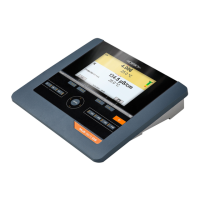
